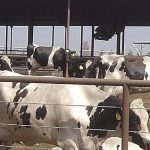
Within two months, two of the largest milk processors in the U.S. filed for bankruptcy. First came Dean Foods, which made the announcement in November. By January, Borden Dairy was doing the same. So what happened?
For at least two years, the dairy giants have increasingly struggled with competition from milk alternatives, innovative startups and deeply discounted private label dairy.
“It’s going to take some disruptors to wake up some of the folks who haven’t made those decisions to invest in the future. If you’re not investing in the category today, you’re going to have a major challenge to survive,” Paul Ziemnisky, EVP of global innovation partnerships at Dairy Management Inc., told Food Dive.
Consumer preferences shifted, but Borden and Dean didn’t change enough, leaving them in dire financial straits and facing significant debt. Dean Foods’ net income dropped from $61.6 million in 2017 to a loss of $327.4 million last year. And while Borden once had a presence in all 50 states, as of last summer, it offered only 35 products in parts of the Midwest, South and Southeastern U.S.
“The company continues to be impacted by the rising cost of raw milk and market challenges facing the dairy industry,” Borden’s CEO Tony Sarsam said in a statement when it filed for bankruptcy. “These challenges have contributed to making our current level of debt unsustainable.”
Although for Dean and Borden, the troubles date back further than just 24 months, the issues have accelerated to a breaking point.
Eric Snyder, partner at law firm Wilk Auslander and chairman of the firm’s bankruptcy department, told Food Dive that for both Borden and Dean, debt was building as people were drinking less traditional milk. He said that dairy processing facilities are also extremely cost intensive, and it can be very difficult to scale down businesses like these.
“It’s just too much debt on the books for businesses that can no longer support it,” he said.
For decades, milk consumption has been declining while new innovations and plant-based options have taken away some consumers who once turned to the popular drink. Non-dairy milk sales in the U.S. increased 61% from 2013 to 2017, while overall sales of dairy milk dropped 15% from about $18.9 billion in 2012 to $16.12 billion in 2017, according to Mintel.
“Despite our best efforts to make our business more agile and cost-efficient, we continue to be impacted by a challenging operating environment marked by continuing declines in consumer milk consumption,” Dean Foods’ CEO Eric Beringause said in a statement when the bankruptcy filing was announced.
Although the economy is strong, certain industries have seen increased bankruptcies because of changing consumer demands, Snyder said.
“It’s a function of the times, it’s a function of the cause and it’s a function of the debt. So it doesn’t look good for dairy just like it doesn’t look good for coal and it doesn’t look good for retail,” Snyder said. “There are certain businesses that just don’t have bright futures and we know what they are.”
Snyder said that about 90% of bankruptcies end in a sale today.
In February, Dairy Farmers of America agreed to buy a substantial portion of Dean Foods’ business for $425 million. If the deal is approved by the bankruptcy court and the U.S. Department of Justice, DFA will acquire 44 of the company’s fluid and frozen facilities, but could still face the same issues that have weighed down Dean for years.
Kenneth Rosen, a partner focused on bankruptcy and financial reorganization at Lowenstein Sandler, previously told Food Dive that Dean is facing “a lot of problems” that likely won’t just be resolved with a change in ownership.
Ziemnisky, however, believes there is a bright future for dairy when looking at the growing international market and the players that are adapting, finding innovative ways to produce and sell the staple beverage.
New Zealand’s a2 Milk’s products, for example, lack a protein that can cause stomach discomfort, and more than doubled its retail count in 2018. Meanwhile, Fairlife, a joint venture with Coca-Cola, produces ultra-filtered milk, a higher-protein and lower-lactose product that has seen substantial growth.
Retailers themselves are launching their own products into the space.
In 2018, Walmart held a grand opening for its first U.S. food production facility, a milk processing plant that produces whole, skim and chocolate milk under its own Great Value brand — a move that led Dean to cancel its contracts with more than 100 dairy operations across eight states. Kroger and Albertsons have also introduced private label lines.
“So retailers today, if you’re a mainstream product and you’re not bringing innovation in the market, they’re asking what are you going to do to drive a category,” Ziemnisky said.
Below is a compilation of some of the major events that happened over the last two years, offering the big picture of how Borden and Dean got here and what’s next for the industry.

























